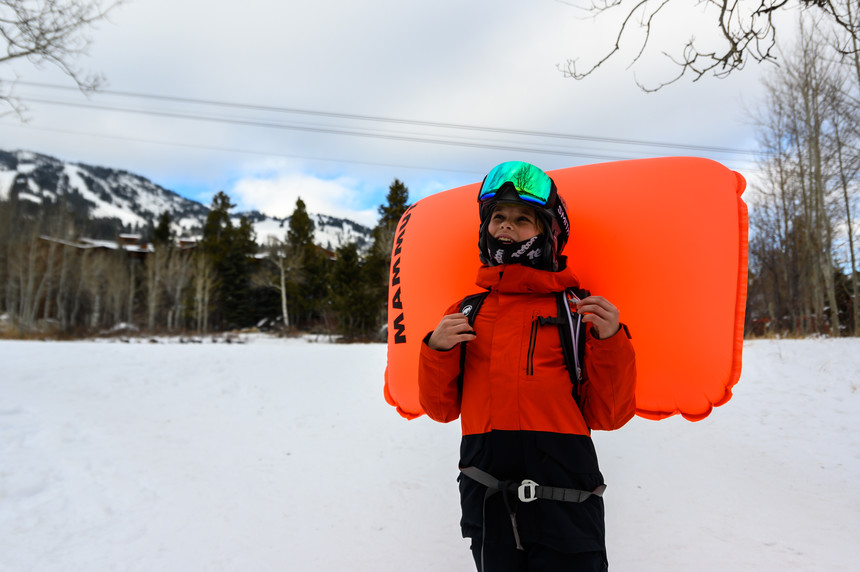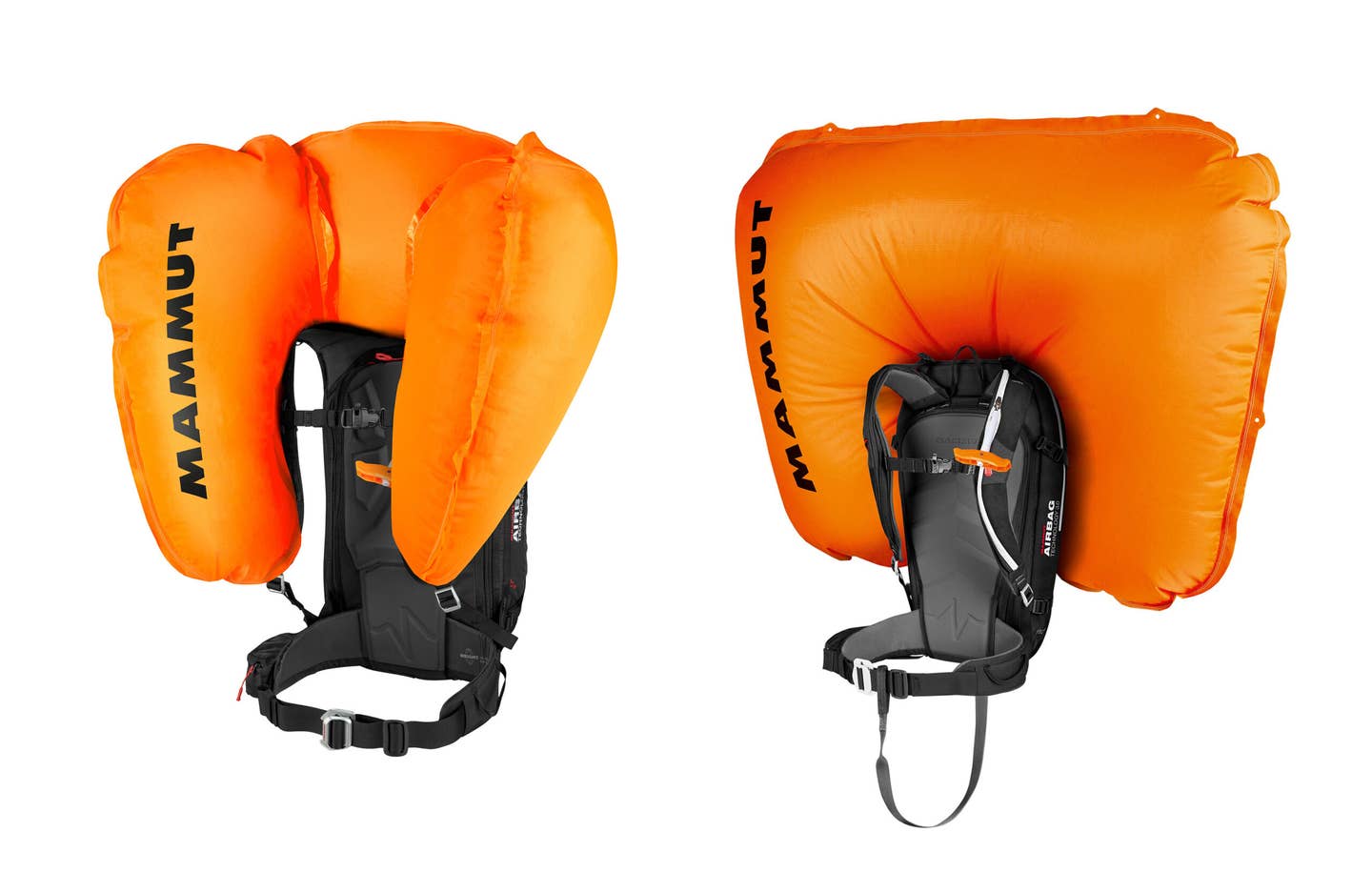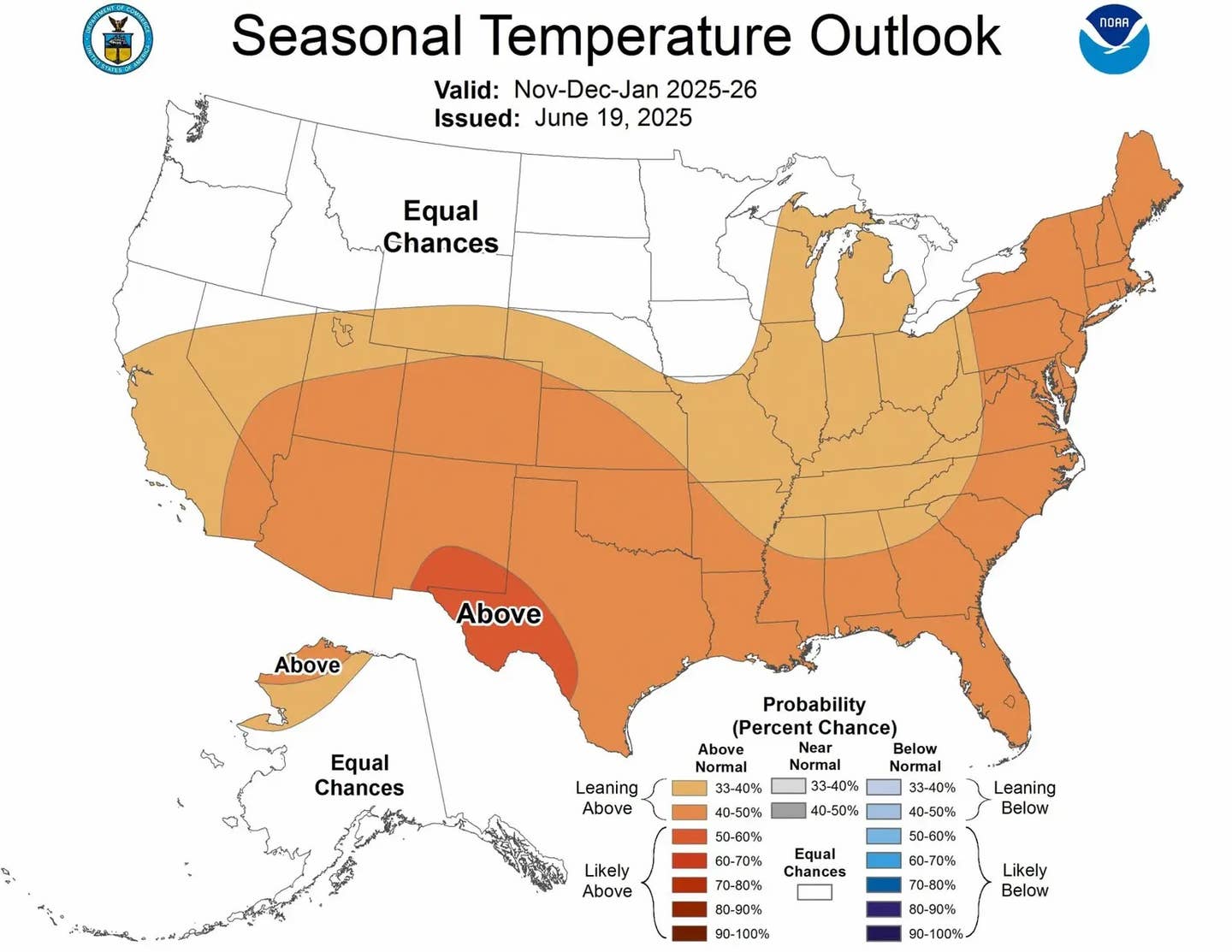Popular Stories
 We tested three of Mammut's airbag offerings, including the Pro PAS 45L, the Flip 22, and the Pro-X RAS 35. Mammut photo.
We tested three of Mammut's airbag offerings, including the Pro PAS 45L, the Flip 22, and the Pro-X RAS 35. Mammut photo.
When it comes to high-level product design and an attention to detail, the Swiss engineers at Mammut are some of the best in the business. Avalanche safety gear needs to be both reliable and easy to use in an emergency, and Mammut took that design philosophy to heart with their latest line of backcountry products, including the PAS and RAS airbag systems and the Barryvox S beacon.
Any backcountry traveler needs to take avalanche safety seriously, so it should be a no-brainer to carry high-quality gear. While many athletes and guides might opt out of using an airbag for weight reasons, the extra margin of safety (for truly just a minimal weight penalty) is something we can get down with.
After using dozens of different airbag systems over the years, one thing has become clear: no airbag will come into the backcountry with us unless it would make sense as a just a backpack itself. That means the straps, pockets, equipment carry options, weight and fit must be dialed. Luckily, Mammut has been in the backpack game for decades, and certainly knows how to make a comfortable and practical pack. Above all, pack fit, pocket and zipper location, as well as empty weight are crucial factors to nail in a design. Only then does it make sense to add the bulk and complication of an airbag system.
 Kai Jones pulls the ripcord on the Flip 22 - the perfect lightweight airbag setup. Max Ritter photo.
Kai Jones pulls the ripcord on the Flip 22 - the perfect lightweight airbag setup. Max Ritter photo.
Mammut offers two separate airbag systems in their line of backcountry ski and snowboard backpacks. The Removeable Airbag System (RAS) is the simpler of the two, and is intended to be easily removable from the bag for days where it is not necessary. The canister, trigger, and bag all come in and out relatively easily, though it does help to read the directions before trying it yourself. Speaking of, the canister is filled with simple compressed air, and can be filled just about anywhere with a high-pressure air compressor, like a dive shop or many hardware stores. It uses the same fill system as the commonly-found BCA packs. Pro tip: Mammut also offers a super lightweight non-refillable carbon cartridge, but you’ll have to go to Europe to buy one, as they cannot ship them within North America.
Join Our Newsletter
The second system is the Protective Airbag System (PAS), that includes a bag that wraps around the wearers shoulders to protect from head trauma. The system is also removeable from the pack, but requires a bit more finesse to repack into the shoulder straps. It is slightly heavier than the RAS system and would make the most sense in a freeride setting, given the added benefit of protection.
 A closer look at the difference between the PAS (left) and RAS (right) systems. Mammut photo.
A closer look at the difference between the PAS (left) and RAS (right) systems. Mammut photo.
We tested both the RAS and PAS systems in three separate pack types. All three were extremely refined, with well thought out design details. It's clear that Mammut has been doing the whole backpack thing for awhile. Our favorite was the Flip 22, a super-lightweight package that feels comfortable and light enough for longer tours. At 22 liters, it isn’t quite big enough for carrying everything you'd need for a big technical objective, but we loved it for going light on sidecountry laps outside the resort or for going light and fast in the bigger mountains. It would also make sense as a pack for mechanized backcountry skiing.
For bigger and more technical days, we love both the Pro-X RAS and Pro PAS packs for ability to carry extra gear but still keep a low-profile fit. At 35 liters, the Pro-X RAS fits the bill for most touring days, and at 45L, the Pro PAS would be a great choice for an overnight trip where carrying bulkier gear is necessary.







